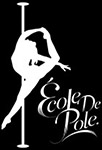Pole fitness is a new and upcoming brand of fitness that is challenging men and women across the world.
The origins of using a pole as a prop for exercise and sport can be traced back to 12th century India to a practice called Mallakhamb, where a gymnast would perform aerial yoga feats on a wooden pole, cane, or rope. Around this same period, Chinese Pole became prevalent further east; two 6-meter high poles would be placed adjacent to one another, and a performer (usually a male) would flip from pole to pole and manage daring drop using only his legs for the catch.
Centuries later, around the 1920’s, pole migrated west in circus troupes and became associated more with burlesque dancing. Gentleman’s clubs began adding poles to their businesses most noticeably in the 70’s and 80’s. The first studio based around pole fitness opened it’s doors in the late 90’s, lighting the fire that made pole what it is today.
No longer is pole fitness and pole dancing exclusively exotic or sensual in nature; there are a multitude of styles from acrobatic, to gymnastic, to flow, to ballet-inspired dance. There are hundreds of pole dance schools and studios across the globe, Ecole de Pole Cleveland being apart of the small minority of international schools, hosting a studio in London, Singapore, and Cleveland.
In addition to the pole studios, there are many national and international professional pole competitions such as Pole Sports Org, Pole Championship Series, and Miss Pole Dance. Many influential athletes in the pole community are pushing for pole to be considered as an Olympic sport in the next several years.
Pole requires intense muscle engagement, focus, strength, and flexibility, all of which is gained throughout your pole journey. Because of the many diverse styles, pole can be whatever you want it to be, and the prop caters to all body types and walks of life.
